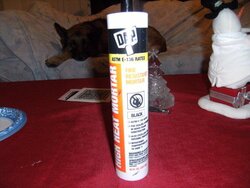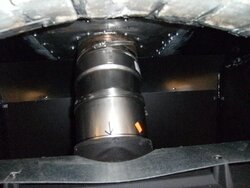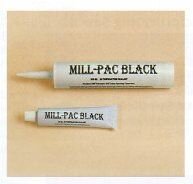Hi folks,
I just pulled my 6" ss liner and did an insulation kit job. I also installed a blockoff plate in the firebox. When reinserting the insulated ss liner, I noticed the male/bottom side of the adapter fitting, where the ss liner goes into the insert, was a bit buggard. I repaired it as best I could with pliers. Anyway, when reattaching to the stove, the fit was not as perfect, as the block-off plate slightly pitched the ss liner/adaptor. I was able to reattach two of the securing screws, but the middle one wouldn't go in because the blockoff plate slightly pitched the direction of the adapter. The pitch is very slight and all I need to do is redrill another hole for the center screw, but I do have a concern that the slight pitch and bent/fixed end on the adapter might leave slight spaces for carbon monoxide to escape. This is especially of concern now that I have a blockoff plate that was insulated above with 1" Kaowool.
Here's my question(s):
1. Would it be a good idea or bad idea to caulk the union area where the adaptor meats the top of the insert with that red high temperature caulk? This red caulk is sometimes used to seal the exhaust ducts for boilers.
2. Would it be a good idea or bad idea to wrap the adaptor/union area with Kaowool and secure the wrap with HVAC tape? My entire ss liner is insulated from the blockoff plate to the top of the chimney, but I did not insulate the 8" or so below the blockoff where the adaptor is. Can Kaowool touch the top of an insert stove?
Thanks for any advice. I can't wait to fire up my safer and more efficient stove. I swept the 25' liner today and recovered about 1/2 gallon of creosote (about a years accumulation). I hope the insulation will make it a cleaner/safer system.
Brian
I just pulled my 6" ss liner and did an insulation kit job. I also installed a blockoff plate in the firebox. When reinserting the insulated ss liner, I noticed the male/bottom side of the adapter fitting, where the ss liner goes into the insert, was a bit buggard. I repaired it as best I could with pliers. Anyway, when reattaching to the stove, the fit was not as perfect, as the block-off plate slightly pitched the ss liner/adaptor. I was able to reattach two of the securing screws, but the middle one wouldn't go in because the blockoff plate slightly pitched the direction of the adapter. The pitch is very slight and all I need to do is redrill another hole for the center screw, but I do have a concern that the slight pitch and bent/fixed end on the adapter might leave slight spaces for carbon monoxide to escape. This is especially of concern now that I have a blockoff plate that was insulated above with 1" Kaowool.
Here's my question(s):
1. Would it be a good idea or bad idea to caulk the union area where the adaptor meats the top of the insert with that red high temperature caulk? This red caulk is sometimes used to seal the exhaust ducts for boilers.
2. Would it be a good idea or bad idea to wrap the adaptor/union area with Kaowool and secure the wrap with HVAC tape? My entire ss liner is insulated from the blockoff plate to the top of the chimney, but I did not insulate the 8" or so below the blockoff where the adaptor is. Can Kaowool touch the top of an insert stove?
Thanks for any advice. I can't wait to fire up my safer and more efficient stove. I swept the 25' liner today and recovered about 1/2 gallon of creosote (about a years accumulation). I hope the insulation will make it a cleaner/safer system.
Brian




